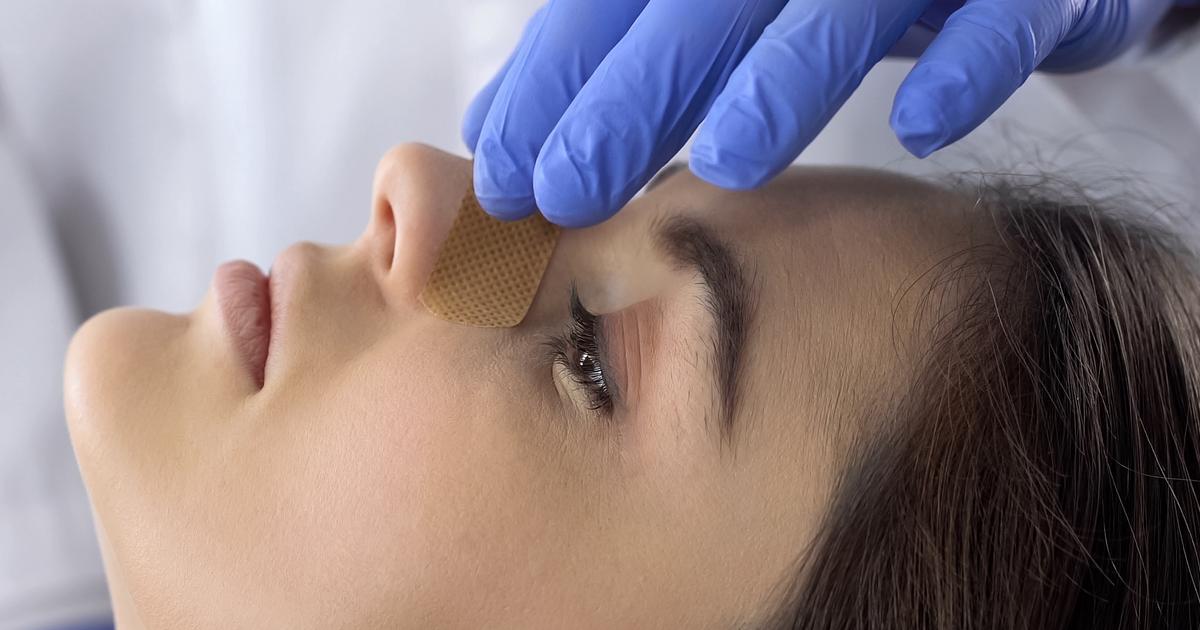Major Causes Of Post-Nasal Drip
Post-nasal drip is a symptom of many medical conditions. Worse than a runny nose, post-nasal drip involves the accumulation of mucus in the back of the throat. Normally, mucus is swallowed unconsciously, but patients with post-nasal drip may have the unpleasant sensation of mucus dripping down the back of their throat. Patients who have post-nasal drip may frequently clear their throats and may have a cough that worsens at night. Patients may also experience a hoarse voice, stuffy nose, bad breath, and sore throat. To determine the cause of post-nasal drip, primary care providers and ear, nose, and throat specialists will take the patient's health history and perform a physical examination. The majority of cases of post-nasal drip are not serious and resolve in a short time. If the physician suspects the post-nasal drip may be due to a bacterial infection, antibiotics may be prescribed. Patients who have frequent episodes of post-nasal drip may need more advanced treatments.
Let's explore some of the most common causes of post-nasal drip in more detail.
Viral Infections

Viral infections such as the common cold and the flu frequently lead to the development of post-nasal drip. Unlike bacterial infections, infections caused by viruses cannot be resolved with antibiotics. Common cold and flu symptoms include a headache, fever, chills, muscle aches, cough, runny nose, fatigue, and sneezing. While cold symptoms usually resolve within ten days, the fatigue caused by flu can last for several weeks. Patients are encouraged to drink plenty of fluids to help break up the mucus associated with viral infections, and certain over the counter medications can help reduce mucus production. Dairy products should be avoided when patients have a viral infection, as consuming dairy increases mucus buildup.
Keep reading for more information on the common causes of post-nasal drip now.
Cold Temperatures

Many patients observe an increase in their post-nasal drip and runny noses after exposure to cold temperatures. When exposed to cold, the mucus within the nasal passages warms and moisturizes air inhaled through the nose. The mucus protects the nasal passages from dryness and other damage due to the cold, and also protects the lungs. Some scientists believe the increase in post-nasal drip during the winter months may be related not just to the temperatures outside but also to the temperatures inside. Many buildings and homes are overheated during the winter season, and this often dries out and irritates the nasal passages, potentially making them more vulnerable to post-nasal drip. Patients should cover their mouth and nose with a scarf when venturing outside during particularly cold weather to avoid post-nasal drip due to cold temperatures. Inside the home, patients may wish to use a humidifier to keep their nasal passages moist and avoid excessive mucus production.
Learn more about the causes of post-nasal drip now.
Allergies

Allergy patients may develop post-nasal drip when exposed to allergens. Some of the most common allergens in the environment include grass, pollen, dust, mold, and pet dander. If a patient suspects they may be allergic to particular substances, they should visit an allergist, who can perform a skin test to determine precisely what substances the patient needs to avoid. Patients who experience post-nasal drip due to allergens may wish to use decongestants to relieve a stuffy nose and reduce mucus. Antihistamines can help relieve nasal symptoms. Doctors may also recommend periodic injections for more severe cases. Patients may be advised to modify their home environments by using a HEPA air filter and avoiding contact with pets. Bedding and toys should be washed frequently, and patients will benefit from the use of a home humidifier.
Continue to reveal the next cause of post-nasal drip now.
Spicy Foods

Consumption of spicy foods often triggers acid reflux and can lead to the development of gastroesophageal reflux disease, a recognized cause of post-nasal drip. Acid reflux and gastroesophageal reflux disease destroy the lining of the esophagus and can cause painful ulcers in the throat. Patients with either of these conditions need to avoid spicy foods, and they should particularly avoid foods high in acid. Tomatoes and tomato sauce, processed meats, peppers, onions, garlic, citrus fruits, ketchup, mint, caffeine, and chocolate are all common triggers for acid reflux. Patients who struggle with post-nasal drip may wish to ask their doctor or a nutritionist for additional dietary advice to minimize their symptoms. Keeping a food diary and noting any episodes of post-nasal drip or reflux that occur after a meal can be useful too.
Get the details on another cause of post-nasal drip.
Deviated Septum

The septum is a thin wall that separates the nasal passages (nostrils). In the case of a deviated septum, the wall deviates to the side, making one nostril smaller than the other. A deviated septum is very common, and many individuals do not know they have the condition until a doctor examines their nose for another reason. Although the condition often produces no symptoms, it can cause difficulty breathing through the nose, and patients may experience a dry mouth and pain in the nose or face. Some patients may also have nosebleeds or crusting of the nasal passages. When the septum is displaced, it can lead to frequent sinus infections, and these may result in post-nasal drip. Patients who find it difficult to breathe through the nose should consult an ear, nose, and throat specialist. They may wish to examine the patient's nose with a lighted scope or a small camera. If a deviation is discovered, medications are generally the first line of treatment. Decongestants can reduce swelling in the nasal tissues, relieving obstructions in the airways. Antihistamines and nasal steroid sprays may also be prescribed. In severe cases, an operation called a septoplasty can be performed to straighten the septum and realign it properly.
Read more about what can cause post-nasal drip now.
Irritating Fumes In The Air

When an individual's nose, throat, and airways are exposed to irritating fumes in the air, the fumes can cause them to experience post-nasal drip. In healthy individuals, the airways, nose, throat, intestinal tract, and stomach contain glands that produce mucus. On average, a healthy individual's nose produces approximately a quart of mucus every day. Most do not realize it because the mucus seamlessly blends with their saliva and is swallowed. However, this mucus production becomes much more prominent in the presence of certain conditions such as irritating fumes in the air. The mucous membranes in the nose, throat, and airways are able to detect fumes from perfumes, smoke, minerals, dust, chemicals, cleaning products, and other irritants. When fumes are detected, the immune system signals the production of more mucus in an attempt to protect the body tissues from the irritating fumes by engulfing and expelling the microparticles. An excessive amount of mucus produced by the nose in response to the fumes does not mix very well with saliva. This causes a post-nasal drip or the unpleasant sensation of thick mucus running down the back of the throat.
Continue to discover additional post-nasal drip causes now.
Object Stuck In The Nose

Post-nasal drip can be caused by an object stuck in the nose of an affected individual. The majority of post-nasal drip cases that occur because of a lodged object in the nose occur in children between one and eight years old. However, this is a rare occurrence in infants due to the fact they do not develop the ability to pick objects up until they are around nine months old. The most common objects to cause post nasal drip according to a collaboration of emergency department physicians are rubber erasers, pebbles, marbles, safety pins, nuts, chalk, pieces of wood, tissue, playdoh, dirt, and peanuts. Additionally, paper wads, beads, beans, washers, sponges, small toys, button batteries, coins, clay, pieces of food, and magnets are also among the list of common items dislodged from nasal passages. Additionally, animate things may also become trapped in the nose with the most prevalent culprits being fly maggots, screwworms, and round intestinal worms the patient has coughed up. The body has the ability to detect any object in the nasal passages that should not be there. When there is an object stuck in the nose, an inflammatory response ensues to try and eliminate the foreign object from the body. This response includes swelling of the nasal mucosa, dilation of blood vessels, and excess mucus production. The excess mucus and any blood that leaks from injury by the object can be felt in the throat as the post-nasal drip sensation.
Uncover details on more causes of post-nasal drip now.
Sinusitis

Sinusitis is one of the most common causes of post-nasal drip in an affected individual. Located behind an individual's nose, eyes, cheekbones, and forehead, are small air pockets called sinuses, which are responsible for the healthy production of protective mucus. When too much mucus is being produced due to other factors, the opening of the sinuses can become obstructed with excess mucus. This malfunction occurs most often in individuals who have allergies or a cold. Bacteria and other pathogens can colonize and thrive inside of the sinuses when their openings have become obstructed. The result of such a mechanism is a viral or bacterial infection of the sinuses or sinusitis. This infection produces symptoms similar to those of a cold, including fever, headache, fatigue, runny nose, cough, sore throat, reduced sense of smell, stuffy nose, and post-nasal drip. Cases of acute sinusitis may have a symptom duration of between one and two weeks, while cases of subacute sinusitis may produce symptoms for a duration of up to three months. Post-nasal drip can be a long term chronic symptom if a patient develops the chronic form of sinusitis.
Keep reading for more on what can cause post-nasal drip now.
Chronic Obstructive Pulmonary Disease

Post-nasal drip can be a symptom that manifests in individuals who have chronic obstructive pulmonary disease (COPD), a long-term chronic disorder of the lungs that causes severe inflammation and obstructions in airflow. COPD is the result of an individual's exposure to particulate matter, cigarette smoke, or irritating gases over an extended period. Symptoms typically do not manifest before significant damage has been inflicted on the affected individual's lung tissues. Because chronic obstructive pulmonary disease is characterized by inflammation of the lung tissues, the tubes inside of the lungs become narrowed easily. Additionally, excess mucus production by the lungs causes the airways to become obstructed, producing a hospitable environment for bacteria and other pathogens to thrive. This mechanism makes COPD patients more susceptible to contracting the flu, pneumonia, and common colds. All of these infections can trigger the nose to produce an excess amount of sputum or hypersecretion that may back up in the throat, producing post-nasal drip in affected individuals.
Learn more about what can trigger post-nasal drip now.
Certain Medications

Certain medications can present with the manifestation of post-nasal drip as a result of their chemical mechanisms in the affected individual's body. Oral contraceptives are taken to induce changes in a female's hormones, which can result in a runny nose and post-nasal drip when starting the medication. Acetylsalicylic acid is known to induce a condition called aspirin-sensitive asthma, which can result in post-nasal drip. Some individuals may have a higher sensitivity to medications containing ibuprofen that can result in a post-nasal drip when starting to take the medication. These sensitivities cause the small blood vessels in the nasal passageways to become dilated and swollen, resulting in congestion that produces post-nasal drip. Several blood pressure medications have been known to produce a post nasal drip. ACE inhibitors cause an accumulation of a bronchoconstrictor called bradykinin in the affected individual's airways. Bronchoconstrictors cause the release of histamine, resulting in increased mucus production and post-nasal drip. Beta blockers, antidepressant medications, sedative medications, and erectile dysfunction medications can all cause blood vessel dilation and swelling in the nose that results in excessive production of mucus and post-nasal drip. Additionally, the body can become somewhat resistant to nasal decongestant sprays, and begin to overproduce in response to the overuse of the medication.
